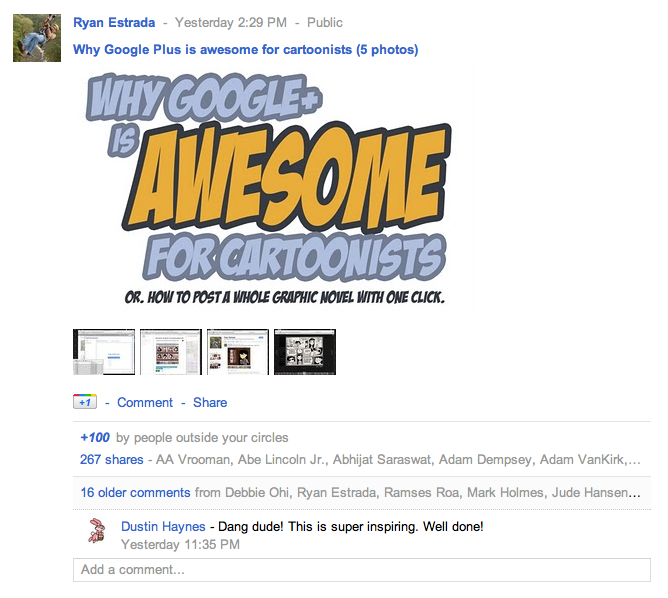Design is perceived by most people to be a discipline where the designer has good control on what he does and the results he wants. The whole design process is something that exist to allow you to create something under certain guiding principles, right?
Well, not entirely, and recently I found a good example.
The other day I stumbled on a nice article on Google+, this one:
I might be wrong (please point me to a good source if I am), but I don’t think that any designer in Google ever thought about this. But this nonetheless happened: Google+ (at least right now) is a good platform to publish comics.
Why things like this happen? Because design doesn’t exist in vacuum, but it has to confront daily with the users, and the users, both as individuals and as a group, are complex systems.
So, when you design something you can always predict the end result to a certain extent, and that’s exactly why testing is so important. So important in fact that you shouldn’t design without testing, it’s inherent in it, being that web design, industrial design or else.
This time, the platform turned out to be also very well suited to create online comics, a kind of “discovery” that was found by the users and emerged naturally from an interaction model that was born to support other uses. Things like this happen more often than thought, another recent example was the Facebook profile page pictures hijacking, and not always are good things.
Of course, this specific case might be just an enthusiast user and not a widespread understanding, however, it’s exactly the right kind of weak signals that can be correctly read and acted upon.
The important thing here isn’t to predict these emerging features, but to see that and encourage or discourage them through an iterative design process.
